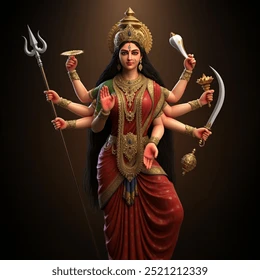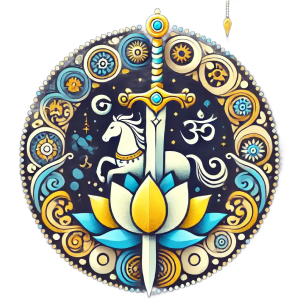
Tervi Puja is a Hindu ritual performed on the third day (Tervi) after a significant event, such as birth, marriage, or a religious ceremony, to seek divine blessings and ensure prosperity, health, and well-being. It is commonly observed in family settings with prayers, offerings, and specific rituals depending on the occasion. The puja is meant to remove obstacles, strengthen family bonds, and bring spiritual protection.Tervi Puja is a Hindu ritual performed on the third day (Tervi) after a significant event, such as birth, marriage, or a religious ceremony, to seek divine blessings and ensure prosperity, health, and well-being. It is commonly observed in family settings with prayers, offerings, and specific rituals depending on the occasion. The puja is meant to remove obstacles, strengthen family bonds, and bring spiritual protection.
• Conducted on the third day after a significant life event or ceremony
• Worship of chosen deities, often family gods or household deities
• Offering prayers for prosperity, health, and well-being
• Includes lighting lamps (Diya) and incense sticks (Agarbatti)
• Chanting of mantras and devotional hymns
• Involves offerings of fruits, sweets, and flowers
• Can be performed individually or with family/community participation
• Promotes spiritual protection and family unity
• Usually conducted at home or in a temple
• Marks a formal conclusion of initial rituals post-event• Conducted on the third day after a significant life event or ceremony@• Worship of chosen deities, often family gods or household deities@• Offering prayers for prosperity, health, and well-being@• Includes lighting lamps (Diya) and incense sticks (Agarbatti)@• Chanting of mantras and devotional hymns@• Involves offerings of fruits, sweets, and flowers@• Can be performed individually or with family/community participation@• Promotes spiritual protection and family unity@• Usually conducted at home or in a temple@• Marks a formal conclusion of initial rituals post-event
Samagri
• Idol or picture of the deity being worshiped
• Lamp (Diya) with ghee or oil
• Incense sticks (Agarbatti)
• Flowers for offering
• Fruits and sweets (prasad)
• Rice grains (Akshata)
• Coconut
• Holy water (Ganga jal)
• Kalash (holy water pot)
• Kumkum (vermilion) and turmeric
• Panchamrit (milk, curd, honey, ghee, sugar)
• Cloth or decorative fabric for altar
• Bell (Ghanti) and conch (Shankh)• Idol or picture of the deity being worshiped@• Lamp (Diya) with ghee or oil@• Incense sticks (Agarbatti)@• Flowers for offering@• Fruits and sweets (prasad)@• Rice grains (Akshata)@• Coconut@• Holy water (Ganga jal)@• Kalash (holy water pot)@• Kumkum (vermilion) and turmeric@• Panchamrit (milk, curd, honey, ghee, sugar)@• Cloth or decorative fabric for altar@• Bell (Ghanti) and conch (Shankh)
Tervi Puja
Pay Now
Change of Plan ? Kalkipuja has you covered !
Cancel upto 48 hours before event & get full refund OR reschedule with ease


